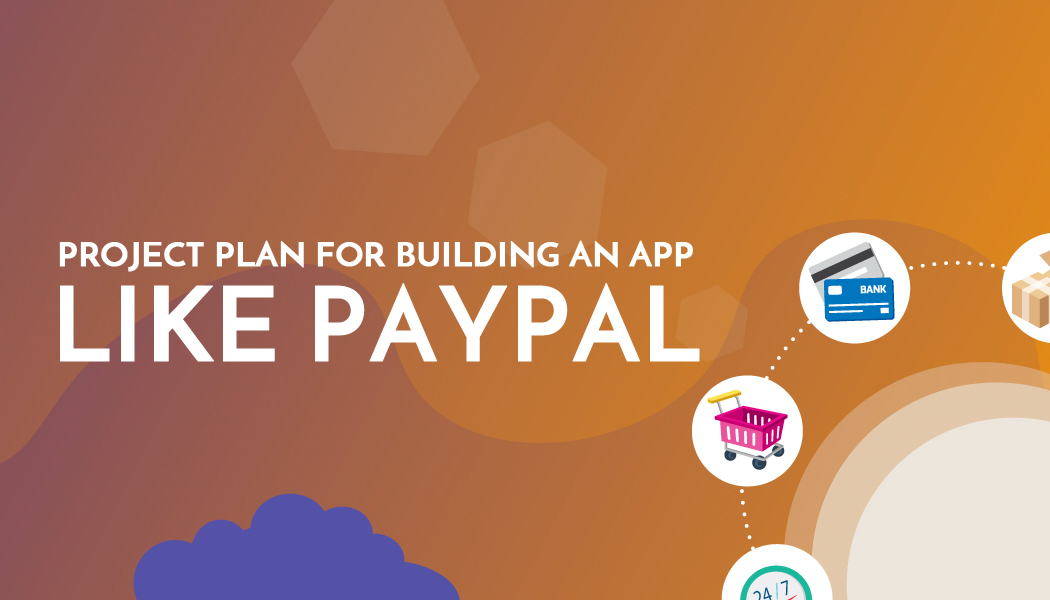Project Plan for Building an App Like PayPal
According to the latest stats, 1.8 billion people worldwide purchased goods online in 2018.
With e-commerce and online banking on the rise, it’s only logical that peer-to-peer payments have become extremely popular. Before Paypal and similar walletless platforms came into being, making a purchase from another person required a trip to the nearest ATM or a bank. There was no easy way to make a payment to your friends, family, and internet retailers.
But with this easy-to-use platform, people can conveniently and quickly transfer money to someone – sometimes it takes only a click of a button on your smartphone or laptop to do so.
Let’s see what the advantages of an app like PayPal are and how to build one.
Advantages of Using PayPal
Being one of the most popular online payment services in the world, PayPal is a safe bet in many different situations when people want to transfer their funds or make payment easily and safely. It can be used for both online shopping and sending money to other people.
Apart from being convenient, this payment processing platform offers you the following perks:
1.Credit card security
When you sign up for PayPal, you connect your credit cards and accounts you want to use for the purchases and money transfers and all the information is stored on the PayPal secure servers. This means that you no longer have to disclose any sensitive information when you want to make online payments.
2.Low costs
Unlike traditional money transfer solutions which rely on several middlemen thus incurring additional costs and hefty charges, PayPal fees depend on the amount and are fairly inexpensive. Besides, there's no monthly or annual membership fee. This particularly implies to sending money abroad, as traditional services tend to rip you off while PayPal offers the lowest price.
3.Fraud protection
PayPal has a very effective and efficient anti-fraud system which means that it's virtually impossible to make unauthorized payments from your account, which makes it one of the safest ways for online shopping.
4.Dispute resolution center
If you purchase something online and the seller violates terms of the agreement, you can file a complaint against them within 30 days, and PayPal will look into the matter and resolve it.
Common Features of Apps Like PayPal
There are various PayPal alternatives with different features on the market. Still, if you want to build a successful P2P app, there are some staple features and functionalities that you should include in your project.
Here's what you should consider:
Unique ID or OTP
A one-time password (OTP), an automatically generated string of characters and numerals, is a time-limited payment authorization is sent to and verified by the person who wants to send money from their account. This is another layer of protection against fraud and makes using P2P apps safe.
Notifications
This feature allows users to monitor their wallet or account activities. They will be informed when the payment has been initiated and received. If you intend to allow your app to be used for individual transactions such as paying bills, these notifications can be used to remind users that they'll monthly Netflix subscription will be due in a couple of days.
Send bills and invoices
This is a practical option, as users will be able to scan and send bills to the persons who are supposed to make payments, as well as generate invoices.
Transaction history
With this feature, users will be able to keep track of all the transactions they make through the app.
Chatbot
By implementing a chatbot in your app you'll help your users find answers to their questions quickly and easily. As chatbots are available 24/7, users can report problems in a timely manner.
Transfer money to bank accounts
This is one of the most important features as most users want to be able to withdraw the money they receive to their bank accounts, as that offers them additional money management options.
Developing an App Like PayPal
What you should know is that this is a complex undertaking, which means that the entire process has to be divided into a series of steps.
1. Asses the scope of your project. Bear in mind that every successful online payment app has its web, Android, and iOS version. Also, this is the step in which you outline the core features of your app.
2. Pick an SDLC model. It's best to launch an MVP to test the performance of your app and get valuable feedback. After that, you should decide on the right software development life cycle – opting for the Agile methodology is recommended for such software projects.
3. Determine your development approach. The Platform as a Service and Mobile Backend as a Service model should be used for the development of your web and mobile apps respectively. For implementing different features such as online payment, ID verification, or push notifications, you'll have to use SDKs and APIs. In order to plan for the possible expansion of your app, take the app internationalization best practices into consideration.
4. Build a scrum team. The scrum methodology is the best for this kind of project. Your scrum team should consist of a business analyst, UI designers, web developers, Android developers, and iOS developers, testers, and a project manager.
5. Purchase managed cloud service platforms for your web and mobile app. Instead of investing in the entire IT infrastructure, opt for a more affordable option – using managed cloud service platforms.
6. Use an online payment solution. In order to implement some of the most critical online payment features, it's a good idea to use an API/SDK solution. Braintree Direct, for example, offers a wide range of useful features such as accepting and processing payment online, options for merchants, compatibility with web, Android, iOS, industry standard security features, the ability to handle widespread payment methods like PayPal, Apple Pay, Samsung Pay, etc.
7. Enable an ID verification option. This will make sure that your app is compliant with numerous strict financial service regulations such as the Anti-Money Laundering or Know Your Customer processes.
8. Use CRM. Given that your app will have to handle different business activities of the merchants who sign up for your services, it's essential to use customer relationship management software.
9. Opt for a bulk SMS solution. If you intend to use push notifications, which are instrumental for engaging your users and offering great customer experience, then buying a bulk SMS solution is a must.
10. Get and set up development tools. Using the following IDEs will simplify the entire process – IntelliJ IDEA for the development of your web app, Android Studio for the Android app, and Xcode for the iOS version.
11. Use a mobile device and browser lab on the cloud for testing your app. Such a solution allows for collaboration and sharing so that your DevOps teams can easily access it.
As you can see, building an online payment app like PayPal is a complex process, but if we bear in mind that such services are the future of the financial sector, the time and money you invest in this project will be worthwhile, and this short guide sets you in the right direction.




